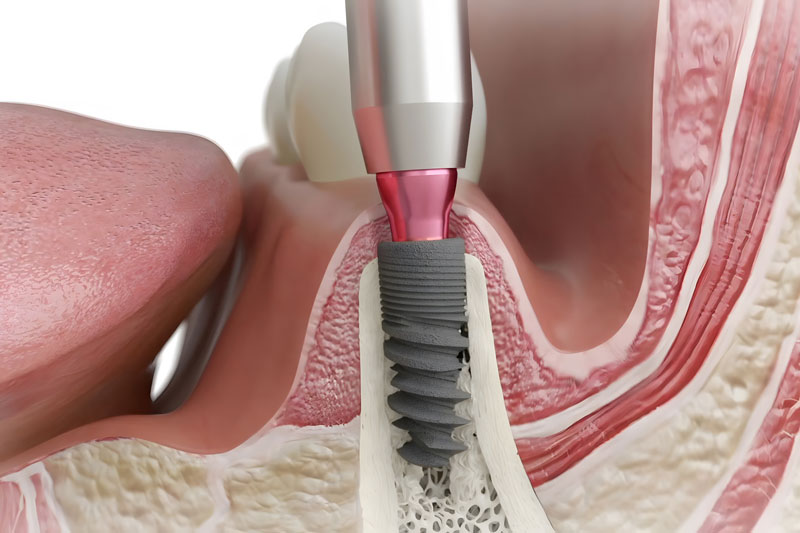Blog - Washington, DC
Tips, Facts, And The
Latest In Dentistry

The Different Types of Crowns and Their Indications for Usage
Posted in Cosmetic Dentistry
Posted on October 5, 2015 by Elite Prosthetic Dentistry

Restorative dentists offer their patients a wide variety of crowns, some of which are fabricated in a commercial laboratory, some on an in-office milling machine, and some by an in-house laboratory. In order to provide ideal quality control with the best fit and aesthetics in the most efficient manner, we have elected to maintain our own in-house laboratory since 1985.
There are several types of crowns that can be placed in a patient’s mouth. They are either fabricated on noble metal, zirconia, or disilicate copings, or they are milled in a laboratory or on a dental office milling machine in a single day. Some of the crowns are tried and proven over many years, some of them are exciting new technology, and one of them, the in-office milled crown, comes with caution and some very significant concerns. No practice should use only one type of crown since there are different indications for choosing one type over another under different circumstances.


Porcelain Fabricated on Metal Coping Crowns:
These crowns are the “granddaddy” of crowns and have been around since the beginning of modern-day crown and bridge therapy. They are the most predictable crowns with the greatest long-term results. That being said, they can be more difficult to work with to establish good esthetics than the milled zirconia or the pressed disilicate crowns, which have a tooth-colored base. They are, therefore, more ideal when working with commercial laboratories that are outside of the practice. The better the commercial laboratory, the better the esthetic results that are achieved, and vice versa. In the best of circumstances, when a practice has an in-house dental laboratory, the crowns are custom fabricated to a patient’s specific characteristics, and aesthetics is not an issue.
Strengths: one of the best fitting crowns; the most predictable fit and greatest strength for large bridge frameworks
Weaknesses: more reliant upon the skill of the technician to achieve ideal esthetics when working with off-site commercial laboratories
Indications for use: larger bridges requiring extra strength to the substructure holding the porcelain; better coverage over tooth abutments that have very large restorations that will be supporting the crowns
<style>.cta-banner-container{background-color:#1369d7;display:flex;justify-content:center;align-items:center;width:80%;max-width:900px;color:white;padding:20px;border-radius:8px;box-shadow:0 4px 6px rgba(0,0,0,0.1);margin:0 auto}.cta-item-box{flex:1;margin:0 10px;text-align:center}.cta-title{margin:0 0 10px;font-size:1.5rem}.cta-paragraph{margin:5px 0;font-size:1rem}.cta-button{background-color:#000000;color:white;padding:10px 20px;border:none;cursor:pointer;border-radius:5px;font-size:2rem;transition:background-color 0.8s ease-in-out,transform 1s ease-in-out}.cta-button:hover{background-color:#00008b;transform:scale(1.1)}
@media(max-width:768px){.cta-banner-container{flex-direction:column;text-align:center}.cta-item-box{margin:10px 0}}</style><div class=”cta-banner-container”><div class=”cta-item-box”><p class=”cta-paragraph”>Need a cosmetic dentist to fix your smile FAST?</p><p class=”cta-paragraph”>Not all cosmetic dentistry is equal – choose wisely for the best results!</p><h3 class=”cta-title”>Get our free PDF: 3 Key Tips Before Cosmetic Dentistry!</h3><a href=”#modal-blog-guide”><button class=”cta-button”>Download PDF</button></a></div></div>
Porcelain Fabricated on Milled Zirconia Coping Crowns:
This is a newer technology wherein tooth-colored zirconia copings are milled to fit tooth abutments, with the crown anatomy also being milled from a library of “typical” teeth in specific locations and according to size and other factors at that location. The shapes are then simulated and altered on a computer monitor.
Strengths: easier crowns for the laboratory to fabricate with greater consistency.
Weaknesses: Crowns are fabricated from a library of crowns (sometimes altered on a monitor) and stamped out; crowns are not custom fabricated. If the milling is not accurate, the crown does not fit well.
Indications for use: cheaper to produce and, therefore, the crowns have a lower cost.


Pressed Porcelain Crown (eMax®)
This is the most promising of the newer crown and bridge technologies. It offers tooth-colored abutments that are first custom fabricated by the technician using wax patterns, which are then used as patterns to “press” the porcelain to those shapes on the abutment dies (replicas). This provides a tighter fit than the milled copings and crowns. The dentist and the laboratory can customize the esthetics in the anterior region by pressing the copings and applying the porcelain according to the patient’s personal esthetic requirements. They also provide excellent posterior crowns.
Strengths: natural colored, better fitting copings; anatomic form created by the technician rather than a library from a software program.
Weaknesses: cannot be used for bridges, at this time.

These crowns are marketed as the ultimate solution for the patient because they are all in one day. The patient has the tooth prepared, an intraoral scan is done, and the dentist’s milling machine fabricates the complete crown using a tooth-colored ingot. The crown is “stamped out” by a program using preformed crown forms from a library of “usual” crowns for a particular area and size. It is not custom fabricated and depends on the accuracy of the milling machine, the drills being used (and how often they are replaced), and other factors.
Strengths: The patient seeks “quick” as the first priority. The patient comes in, has the tooth prepared and scanned, and receives the crown on the same day.
Weaknesses: Poor fit, since this crown is dependent upon the accuracy of the scan and the milling machine in the dental office, which is not as precise as the higher-grade milling machines; monochromatic color, since no color can be placed internally by using different porcelains, and colors can only be changed by applying surface stains, which is usually performed by dental technicians.
Indications for use: none; speed should not take precedence over quality of the fit and esthetics
Summary:
In our opinion, the best overall situation for the patient occurs when the dental practice offers both ceramo-metal copings and pressed fit copings, since they both provide the best fit. The restorative dentist chooses the right type, depending upon clinical indications. This translates to the best long-term prognosis. With the right case management, they provide great esthetics, as well.





